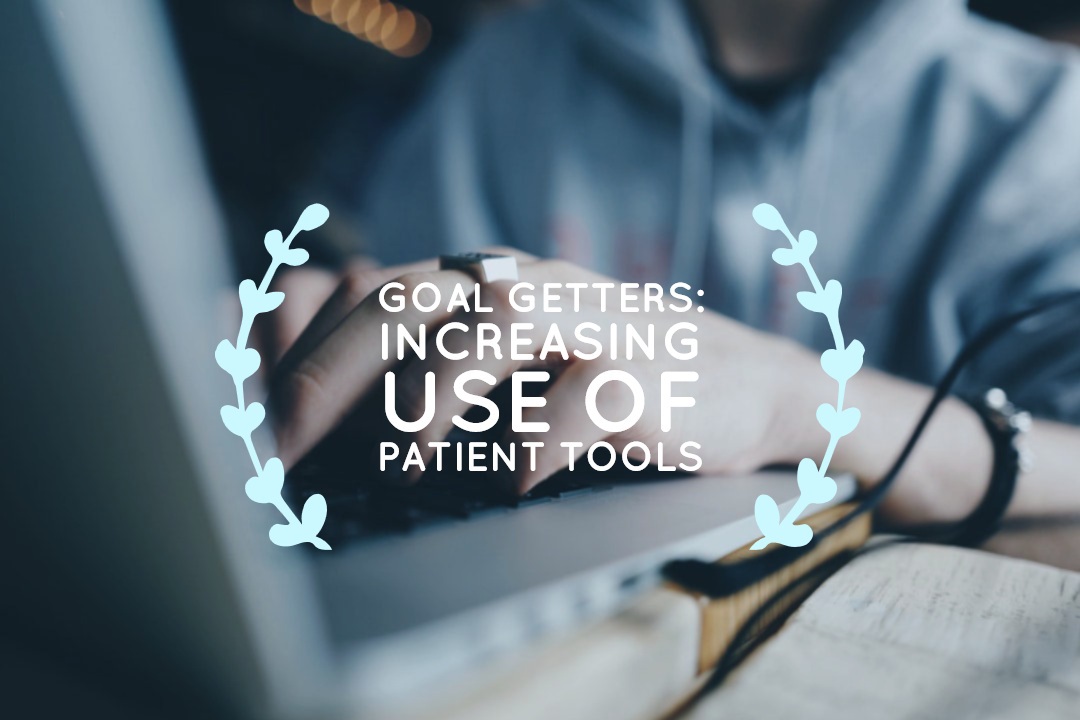Your cart is currently empty!

Goal Getters: Increasing Use of Patient Tools
What patient tools do you have on your practice website? Can patients book an appointment, request a prescription, download and submit a form, visit a secure patient portal, or pay their bills online? If you have patient tools on your website, increasing use of patient tools is probably one of your goals for your website.
Increasing the use of the tools can reduce busywork for your team and increase patient satisfaction. So how can you make it happen?
This is the second in a series of posts on how to make the needle move on important digital goals for your website.
Make sure your digital tools work.
It is very frustrating to fill out a form and then discover that it doesn’t work. Test your tools occasionally — better yet, have strangers who are unfamiliar with your practice fill them out. That way, you can find out if there are any points at which people become confused.
If you have to fix the tools up, share the news that they’ve been updated in your social media. Include that news in your newsletter and blog, too.
You won’t know, if you don’t check them regularly, how long they haven’t been working. People who have attempted to make an appointment a few times without success will not come back and try again. You need to let them know that the problem has been fixed.
While you’re checking the tools, go ahead and check them all the way back to the response. Are they reaching the right people? Sometimes when office procedures change, your website is the last thing you think about.
It may be frustrating to fill out a form and find that it doesn’t work — but it can be even more frustrating to think it works when it doesn’t.
Make patient tools easy to find.
You might have a link to your portal or a “Patient Tools” page in your main navigation. This is a good way to help patients find those tools easily.
But we’ve seen websites where those tools were under the “About Us” tab or in links at the bottom of the page.

The screenshot above shows the patient tools links front and center on a clinic page.

In the example above, Patient Tools are in the dropdown menu, but in a very logical place so visitors can find them easily.
Help patients use the tools.
Does your practice have a kiosk or some tablets that patients can use to check in digitally? Help patients through the process once or twice.
You can also give instructions online. In general, we figure that a website with instructions on how to use it just isn’t built right. In this case, though, visitors may need some reassurance about what’s coming up. Chat with visitors enough to get an idea of the kinds of concerns they’re facing and address them directly.
It’s easy to assume that everyone nowadays is familiar with online tools and forms, but that is not the case. Pew Research Center found recently that 13% of adults in the U.S. do not use the internet. Who isn’t using the internet? Three things characterize these people:
- They’re likely to be 65 or older.
- They’re likely to live in a rural area.
- They probably have less formal education.
If this describes your patient population, they’ll probably need more support than the average person.
Don’t forget accessibility.
The Americans with Disabilities Act applies to your website. Websites have specifically been identified as public places, so the law is clear on this point.
This means that your website should be built so that people with limited vision, hand tremors, or other physical issues should find it easy to use. When you check your online patient tools, consider recruiting testers with disabilities to make sure that the tools will work for your patients with disabilities. At the very least, if they don’t work well with assistive devices or for some other reason don’t meet your usual standards for accessibility, make a point of providing alternatives at the web.
You’ll find more suggestions at Welcoming Website Visitors with Disabilities.
Increasing use of patient tools is a valuable goal for your website. Set up visits to these tools in the Goals section of your Google Analytics account to track this goal easily.
by
Tags:


Leave a Reply